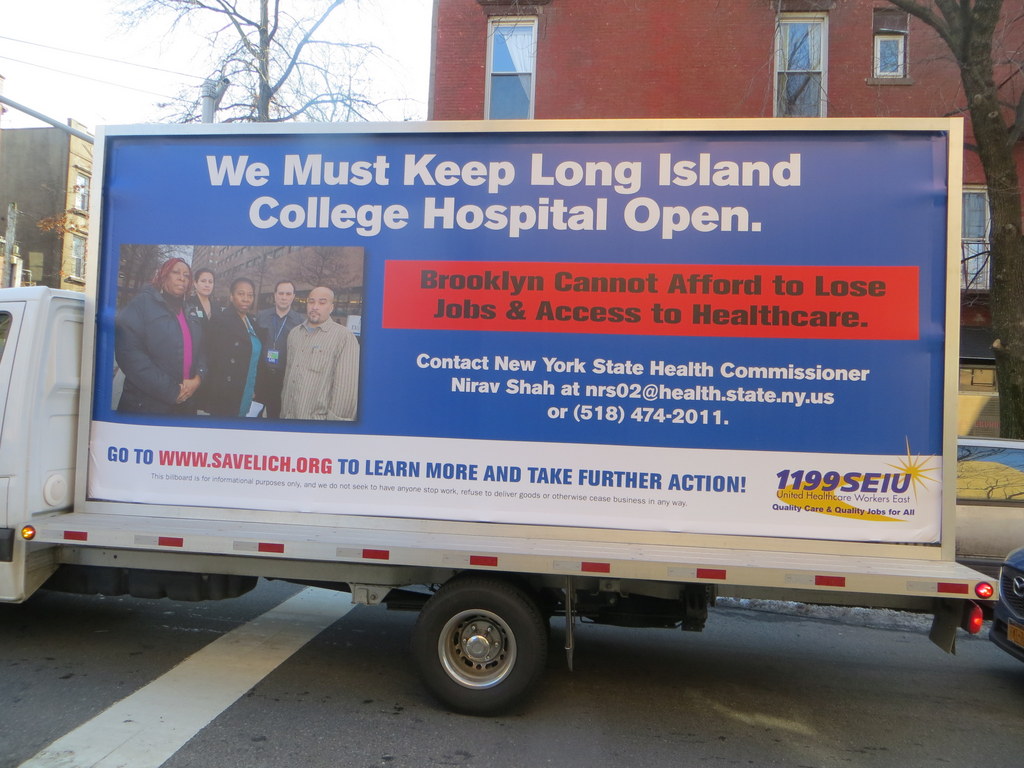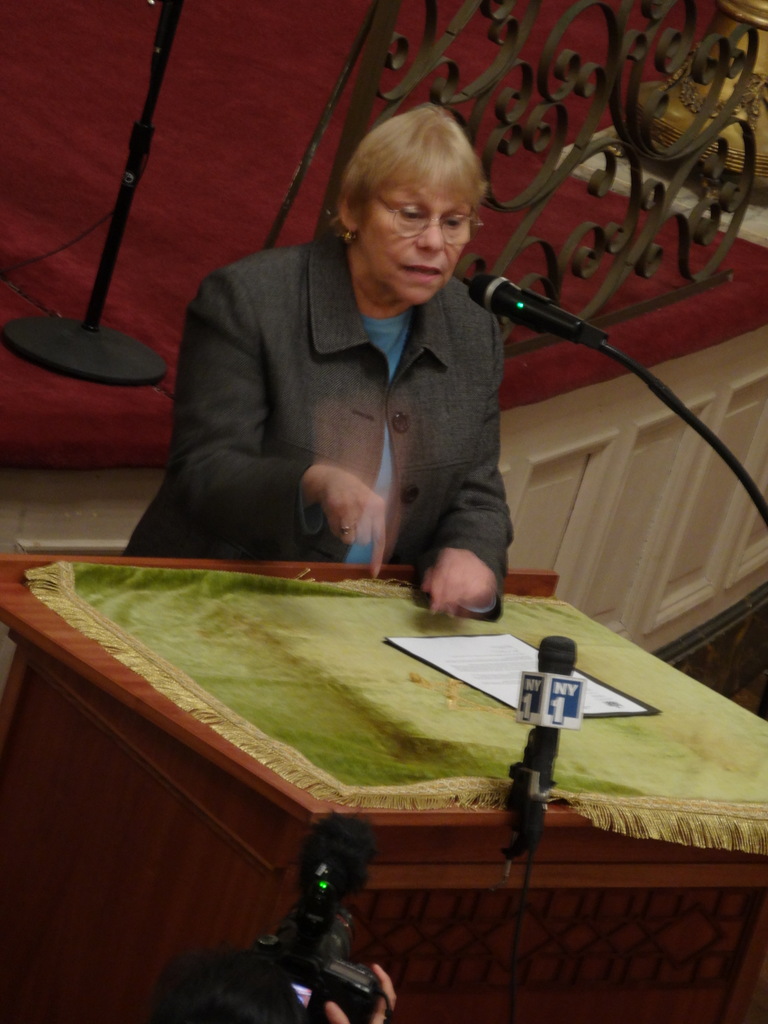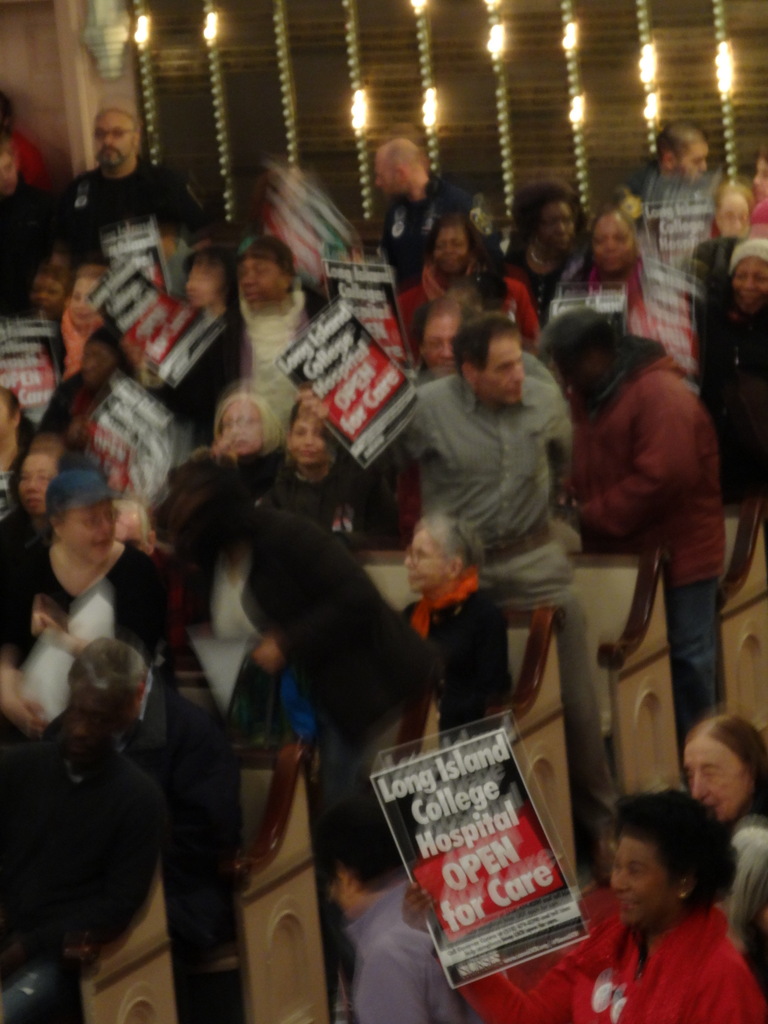
On February 21—in a dynamic pause in the momentum toward the closure of Long Island College Hospital (LICH)—Judge Betsy Barros issued a temporary restraining order to keep LICH open for care at least until March 7, when the case will be reviewed. Until that time, the State of New York Board of Trustees is barred from executing a formal plan to close the hospital and from communicating with the State Department of Health (DOH), which has the final say regarding SUNY’s application for closure.
“It’s a victory, and just one of the tools in our cache,” said Jill Furrillo, executive director of the New York State Nurses Association (NYSNA), which filed the suit along with 1199 SEIU and the Concerned Physicians of LICH. “We are exploring any and all means to keep this hospital open, which include political and legal avenues.”
The injunction halts a precipitous month of revelations for LICH. On January 17, the state comptroller diagnosed SUNY Downstate Medical Center as hemorrhaging cash—specifically, $117 million in 2011. LICH was listed as the greatest contributing factor to Downstate’s ills, accountable for $44 million of its losses in the same year. Within a week, it was announced that the hospital’s closure would be put to a vote. And despite an eruption of union protests in the same room, SUNY Trustees voted unanimously to flatten LICH’s lifeline.
“EUTHANIZED,” the headlines read. “Long Island College Hospital set to close.”
But in rallies, including one on Valentine’s Day, LICH employees, union members, local politicians and community members banded to present their own diagnosis: economic mismanagement on the part of Downstate, and a chronic lack of good faith with the communities served by LICH.
A counterplot emerged to the board’s vote for euthanasia. Instead of looking for new jobs—as Downstate President Dr. John Williams expected, according to The New York Times—the nurses, doctors, technicians, and ambulance drivers employed by LICH began fighting back. With the injunction, they may have landed a first punch.
The unions and the workers stand to lose their jobs. The hospital, which serves Cobble Hill, Brooklyn Heights, Red Hook and other neighborhoods in the area, employs about 2,000.

Progressive politicians like Councilman Brad Lander, State Senator Daniel Squadron and Assemblywoman Joan Millman count on those workers as constituents. In rallies, they have been at least as vocal in their opposition to the closure of LICH as the unions have been.
Still, after the SUNY Trustees’ decision, only the DOH—which is perceived by the unions as an arm of Governor Andrew Cuomo—has authority to reverse it. Unions and community leaders like Roy Sloane, President of the Cobble Hill Association, are dubious of Cuomo’s intentions. In a January 25 budget proposal, Cuomo included a pilot program giving license to business corporations to own and operate two hospitals in the state, including one in Kings County.
That hospital could conceivably be run as a for-profit—and against the mold of hospitals like LICH. And according to Sloane, Squadron, Lander and other members of the community, it would be most likely be financed by the sale of LICH’s real estate.
“It’s a naked land grab,” said Sloane. Squadron said the plan “essentially turns this $63 million state grant into a subsidy for a massive real estate deal,” in reference to a HEAL New York grant LICH and Downstate received when they merged back in October 2010.
In the little over two years since they merged, the move has gone from being regarded as LICH’s savior to a potential coup de grace. Observing Downstate’s failure to responsibly manage and rehabilitate LICH, the community feels “looted,” Squadron said. It feels “snookered,” wrote Millman. In rallies and online petitions like Millman’s at change.org, officials have emphasized this refrain of demolition by neglect.
“LICH has been slowly and constantly drained of its resources – the loss of our nursing school, the selling of valuable properties, the failure of the billing department to collect on payments owed to them. It’s akin to not treating a diseased limb until there is nothing to do but sever it,” reads Millman’s petition, which has garnered nearly 6,000 signatures.
In the media buzz surrounding the potential closure of LICH, silence communicates as well. Neither the governor nor the DOH—the parties to whom the petition is addressed—have taken pains to stake out their own message. Neither has Mayor Michael Bloomberg, a known proponent of real estate development. Mayor-hopeful Christine Quinn has also held her tongue. She was vocal in her opposition to the closure of another hospital—St. Vincent’s— despite lingering confusion about the role she played in the move
St. Vincent’s, LICH and Interfaith Medical Center—which filed Chapter 11 bankruptcy in December last year—are just the most recent of a constellation of city hospitals and health systems to tap out on resources. In lieu of these hospitals, the shift is toward for-profit healthcare that is less accessible to underprivileged communities in particular.
When closing a hospital like LICH, communities like Red Hook–in many ways—remain the lowest common denominator. Approximately 58,570 patients used LICH’s emergency room in 2012. Of those, 11,000 were admitted to the hospital. Trends of 60,000 patients per year at LICH have been steady over the past decade. If LICH closes, those patients must go elsewhere, introducing new strains and the possibility for new errors in city healthcare.
Trends of operating losses at LICH have also been steady, stretching back 17 years to 1994, according to the comptroller’s audit of Downstate. In fiscal year 2013-14, the hospital’s projected cash deficit is $72.5 million.
But other numbers the comptroller reported—including that of beds left unused in 2010, at an average of 284 each day—have proved misleading. That number refers to the total for which LICH is certified, not the total for which it is staffed, equipped and budgeted, NYSNA’s Furrillo said. H. Carl McCall, SUNY’s Chairman and a former state comptroller, admitted as much at a SUNY Trustees hearing on February 8. On February 21, 269 beds were occupied in the hospital—or over full capacity.
Ahead of the court hearing on March 7, more information will circulate as it is determined whether Downstate won’t or truly can’t deal with the financial difficulties LICH and its underserved communities represent.

For one resident, Judith Daly, 67, who was born in LICH—and whose children were born in LICH—losing the hospital is “like losing a limb.”









3 Comments
Reblogged this on fairiesangelsnurses and commented:
Great coverage by the Red Hook Star Revue
Great coverage,thanks for your support!
excellent reporting by the Red Hook Star – thanks for accurately telling the story & the facts that main NYC news don’t want to talk about.